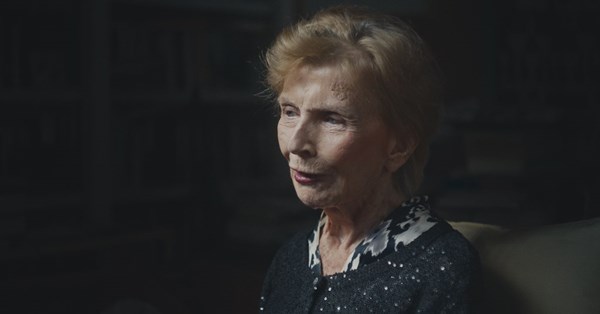THE writer Edna O’Brien did not cease from exploration. Something led her from the world that she knew into ones with extraordinary possibilities.
Sinéad O’Shea’s illuminating documentary, Blue Road: The Edna O’Brien story, interviews her shortly before death last year. At 93, frail but still commandingly intelligent, she says: “I used to think love mattered most. It doesn’t. I ask myself about wars and famine and cruelty. And God. I do not believe in God in the same way. I do not.”
Anyone aware of O’Brien’s strict Roman Catholic upbringing would be surprised if she did. As recounted at her requiem mass, she was “a deeply spiritual woman whose curiosity and open heart led her to many faiths throughout her lifetime”. And yet her heart’s desire was always to be buried on the uninhabited Inis Cealtra (Holy Island) amid the ruins of a monastery and seven churches. The end is where we start from, and there is truly a sense of the author’s returning home.
It is significant that, when moving to Dublin, the first book that she ever bought and carried everywhere was T. S. Eliot’s Introducing James Joyce. She finds in Leopold Bloom, like his mythic counterpart Ulysses, a person whose ragbag of lived experiences transcends so-called realism. This could be a clue to why O’Shea’s film is called Blue Road. We hear, in voiceovers from Jessie Buckley, from O’Brien’s diaries. Entries include remembering being criticised by her then husband, Ernest Gébler, for describing a road as being that particular colour. For a novelist, reality, like colour, lies in the eyes of the beholder.
It becomes plain that O’Brien’s understanding of women was that they possess more sensitive and sensuous qualities than men, whom she saw as tending towards a cerebral outlook. We witness this view in several clips from O’Brien’s television appearances. She also continues, at least in some circles, to be regarded as shockingly frank about female sexuality. Rumours abound of not just the banning, but the burning, of her books back in Ireland.
As far as O’Brien is concerned, her debut novel The Country Girls presents us with two heroines: one who isn’t bold (a “ninny”, she says) and one who is and is, therefore, “her saviour”. A reader tells her that the novel (largely a portrait of the artist as a young woman) was like a prayer book, a plea for women to be released from servitude. The film, assisted by comments from various literary admirers, spends time considering O’Brien’s later works on issues such as paganism, Bosnia, and Ulster.
Special attention is given to sessions with the controversial psychiatrist R. D Laing, author of The Divided Self. There are, she claims, many sides to her: both fire and rose. She was a devoted mother, glitzy socialite, depressive, nature-lover, and, once a Catholic, always a Catholic. Her life and her writings mainly took took the form of a quest for freedom, tinged with shades of Eliot: there is a knowing that the end of all our exploring will be to arrive where we started, and the fire and the rose are one.

















